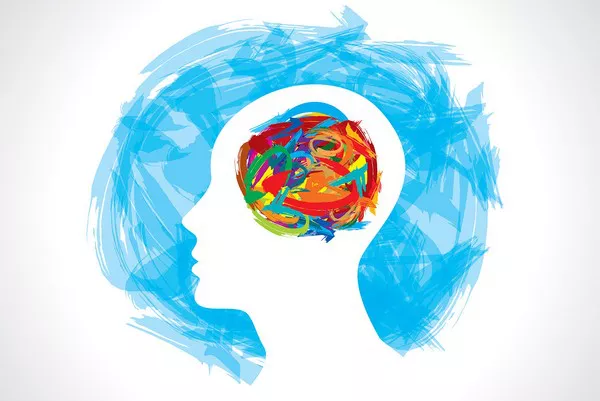Akathisia is a distressing and often misunderstood neurological disorder that affects the ability to remain still or find comfort in certain positions. Individuals with akathisia experience an overwhelming urge to move their body constantly, which can lead to significant discomfort and agitation. This condition is often underdiagnosed and misdiagnosed, making it essential to increase awareness and understanding of akathisia. In this comprehensive article, we will explore akathisia in-depth, including its definition, causes, symptoms, and available treatment options.
Defining Akathisia:
Akathisia is a movement disorder characterized by an intense inner restlessness and a compelling need to be in constant motion. The term “akathisia” is derived from the Greek words “akathemi” (not to sit) and “ia” (condition), emphasizing the inability to sit or remain motionless.
The sensations experienced during akathisia are often described as an overwhelming sense of discomfort, inner agitation, and an urge to move the limbs or body continuously. Individuals with akathisia may find it challenging to relax, sit, or stand in one place for extended periods, leading to constant shifting of positions or fidgeting.
Akathisia can occur as an adverse effect of certain medications, particularly antipsychotic medications, but it can also arise due to other underlying medical conditions or neurological disturbances.
Causes of Akathisia:
Akathisia can be triggered by various factors, and its etiology is not always straightforward. The primary causes of akathisia include:
1. Medications: The most common cause of akathisia is the use of certain medications, particularly antipsychotic drugs. These medications work by affecting dopamine receptors in the brain, leading to an imbalance in neurotransmitters that can result in akathisia.
2. Withdrawal from Medications: Abruptly discontinuing or reducing the dosage of certain medications, such as antipsychotics or benzodiazepines, can also lead to akathisia as the brain tries to readjust to changes in neurotransmitter levels.
3. Neurological Disorders: Akathisia can be associated with certain neurological conditions, such as Parkinson’s disease, multiple system atrophy, and restless leg syndrome.
4. Psychiatric Conditions: Individuals with anxiety disorders, major depression, or other mental health conditions may experience akathisia as a manifestation of their psychological distress.
5. Substance Abuse: Certain substances, including stimulants and illicit drugs, can induce akathisia or exacerbate existing symptoms.
6. Medical Conditions: Akathisia can rarely be a symptom of other medical conditions, such as iron deficiency anemia or brain lesions.
Symptoms of Akathisia:
The symptoms of akathisia can be distressing and challenging to manage. They may vary in intensity from mild to severe and can manifest as:
1. Restlessness: A constant need to move or change positions due to a feeling of restlessness and discomfort.
2. Pacing: Frequent and purposeless walking or pacing in an attempt to alleviate the inner agitation.
3. Fidgeting: Constant fidgeting, tapping of feet, or shifting weight from one leg to the other.
4. Inability to Sit Still: Difficulty sitting still for prolonged periods, even during activities that typically require stillness, such as watching a movie or attending a meeting.
5. Rocking or Swinging: Engaging in repetitive movements, such as rocking back and forth or swinging the legs, to alleviate the inner discomfort.
6. Emotional Distress: Feelings of anxiety, irritability, and unease.
7. Insomnia: Difficulty falling asleep or staying asleep due to the restlessness and inner turmoil.
Diagnosis of Akathisia:
Diagnosing akathisia requires a thorough evaluation by a qualified healthcare professional. The diagnostic process may involve:
1. Medical History: The healthcare provider will review the individual’s medical history, including current and past medications, any recent changes in medication, and the presence of any underlying medical or neurological conditions.
2. Physical Examination: A physical examination will be conducted to rule out other potential causes of restlessness and movement disturbances.
3. Psychological Assessment: The healthcare provider may assess the individual’s mental health and emotional well-being to identify any co-existing psychological conditions.
4. Medication Review: If the individual is taking medications, the healthcare provider may evaluate the dosage and type of medications being used to determine if akathisia is drug-induced.
5. Observation and Reporting: Akathisia can be challenging to identify, and it may require careful observation and accurate reporting of symptoms by the individual or their caregivers.
Treatment of Akathisia:
The treatment of akathisia primarily focuses on managing symptoms and addressing the underlying cause. Depending on the severity and cause of akathisia, treatment options may include:
1. Medication Adjustment: If akathisia is a side effect of a specific medication, the healthcare provider may adjust the dosage or switch to an alternative medication with a lower risk of causing akathisia.
2. Medication Discontinuation: In some cases, discontinuing the medication responsible for causing akathisia may be necessary. However, this decision must be carefully weighed against the benefits of the medication in treating the individual’s underlying condition.
3. Adding Medications: Certain medications, such as benzodiazepines or beta-blockers, may be prescribed to manage the symptoms of akathisia and provide relief from restlessness and agitation.
4. Psychotherapy: Psychotherapy, particularly cognitive-behavioral therapy (CBT), can help individuals develop coping strategies to manage anxiety and agitation associated with akathisia.
5. Supportive Care: Providing emotional support and understanding to individuals experiencing akathisia can be beneficial in alleviating distress and improving their quality of life.
Conclusion:
Akathisia is a neurological disorder characterized by an intense inner restlessness and an irresistible urge to be in constant motion. It can be a side effect of certain medications, a symptom of underlying medical or neurological conditions, or a manifestation of psychological distress. Recognizing and diagnosing akathisia is essential for effective management and treatment. Healthcare providers play a vital role in identifying the condition and tailoring treatment plans to address both the symptoms and the underlying cause. Early intervention and appropriate treatment can significantly improve the well-being and overall functioning of individuals affected by akathisia. Increased awareness and understanding of this condition are crucial steps in providing optimal care and support to those living with akathisia.

